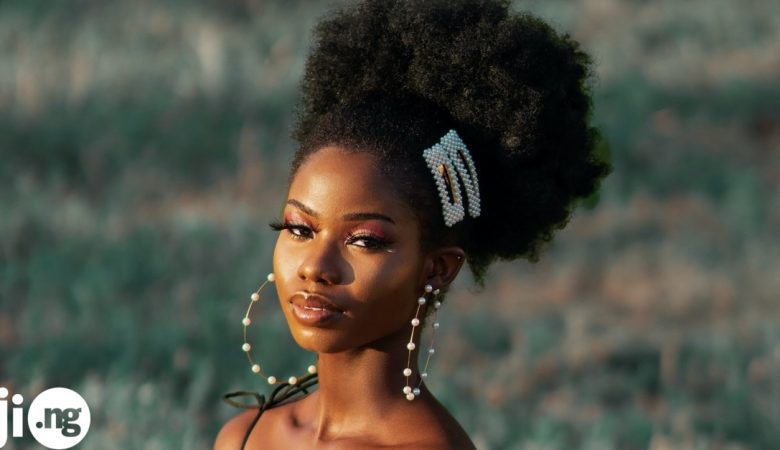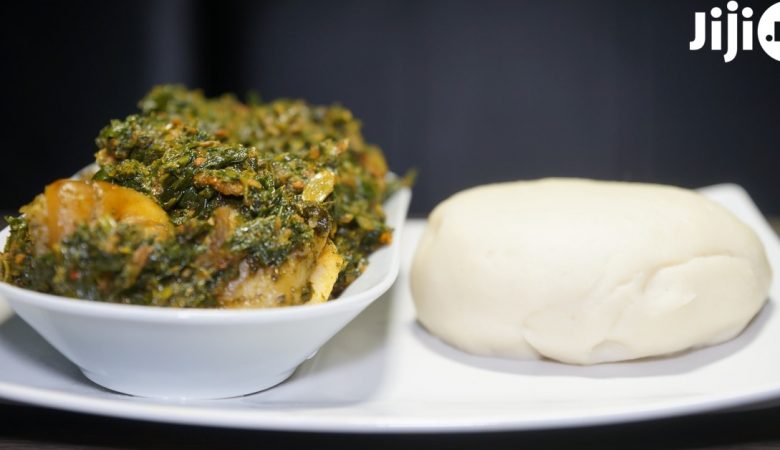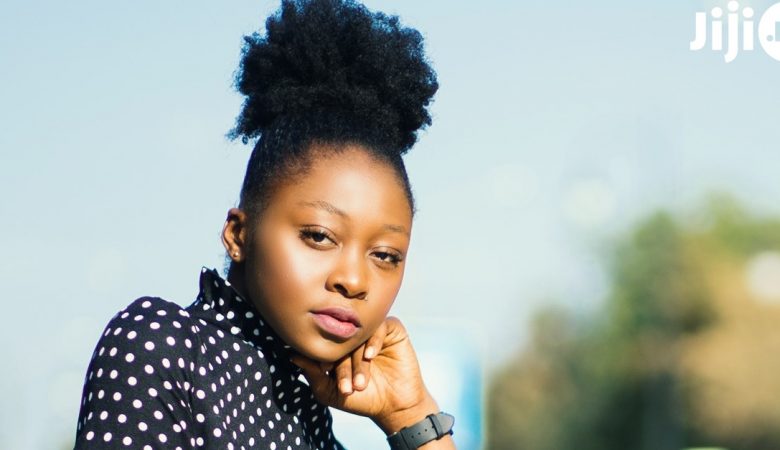An average teenager tries to be rebellious about wearing a hat when it starts getting cold. However, even an average teenager would not say a word against wearing a gele – one of the most popular present-day fashion trends with a 400-year history.

Upgrade your style with the Jiji
[otw_shortcode_button href=”https://jiji.ng/25-african-gele?utm_source=blog&utm_medium=article&utm_campaign=jiji” size=”large” icon_position=”left” shape=”square” color_class=”otw-red”]Click for price[/otw_shortcode_button]
WHAT IS GELE
The correct pronunciation is gay-lay – this is the word for a sophisticated head wrap, eloquent and dynamic. Gele impresses by the variety of used forms, twists, and perpendicular balances.
Gele is a cloth for covering head for women. In other words, it is a specific head scarf, widely used by women predominantly in Western and Southern Africa.
Gele is a part of the dressy look, which has lately become one of the most popular fashion accessories for the women of different ages. The most likely places to see women in gele are weddings and other traditional events. It is worn as a matching piece.
As a rule, gele may vary, depending on the country and a particular setting. Interestingly, the ritual meanings of gele may vary across regions. The simplest forms of gele look similar to ordinary bandanas. The sophisticated designs require more effort and time. Also, they are produced from the special fabric made for this purpose.
GELE AND HISTORY

The historians say that black women in African colonies were obliged to cover their hair with scarves. In the majority of territory, it was stated by law.
It was believed that exotic-looking local women distract European men or leave them “confused.” Time passed, ridiculous demands were forgotten, but wearing head ties is still popular among Nigerian women. And no wonder: gele designs are not just stylish, but also protects the hair and add charm to any look!
GELE AND TRADITIONS
Wearing gele is a tradition common all women in Nigerian culture. Nevertheless, the representatives of Yoruba and Ibgo Cultures wear this attire more often. The occasions are not limited to weddings or big religious feasts. For years, gele was the accessories women would put on when going to church, while visiting guests, even attending markets, not speaking about holidays and other celebrations.
Traditionally, wearing gele varies throughout West and South African regions.
- Ghana: women wear head wraps on religious days (Friday, Saturday, and Sunday), depending on their religion (Muslim, Seventh-Day Adventists, and Christian).
- Malawi: head ties are quite conservative and worn in order to protect hair (for example, during bad weather or sleep).
- South Africa: women often wear white head ties to church services or sometimes as accessories.
- Zimbabwe: head wraps are worn as accessories for creating a stylish look.

In all these countries, head ties look similar and usually known as ‘duku’ or ‘dhuku.’ Nigerian gele stand out not only with the name, but also for being larger, dressier, better liked and more popular, and often more colorful.
A Nigerian woman has appropriate gele for every occasion: ceremonies, church activities, feasts and important events, and just everyday activities.
HOW TO WEAR A GELE
The main rule in wearing gele is do not set any rules or limits.
- Usually, a gele covers entire woman’s hear and ears, leaving only face and lower part of earlobes exposed.
- You can also tie it leaving eyebrows visible if the fabric is not too heavy for this.
- A gele work with traditional attire may be of the same color and made of the same material.
- It can be made of different fabric and have a different texture.
- It can be completely contrasting, with or without prints, regardless of what clothes you are wearing.
GELE AND FASHION

During latest years, African fashion had a great influence on fashion trends all over the world. The single fact that designers like Michael Kors and Louis Vuitton use the elements of African traditional styles and patterns in their collection washes any doubts away.
Traditionally, the way a woman wears a gele indicated her marital status: an end leaning to the right for married woman – an end leaning to the left for a single woman. Nowadays, the way a woman wears a gele can show that either she is from Nigeria, or she reads every Vogue issue.
TYPES OF GELE MATERIALS
A gele does not have any sophisticated features in the way it is created: it is a flat piece of fabric, which turns into a masterpiece after a person tries it properly.

The selection of Nigerian gele fabric is enough rich to let women experiment and fulfill the needs of the most demanding fashion followers. The fabric should be stiff enough to hold together, but flexible at the same time. The most common fabrics, used for gele, are:
- sego,
- aso-oke,
- ankara,
- bazin,
- damasc,
- jubilee,
- brocade,
- and African print.
Aso-Oke is probably the most common choice among the styles of head tie. This kind of material is in the list of the favorite ones because of its tight glossy structure and the variety of colors and patterns available.
In the past, it was the sign of wealth of rich people. It is perfect from the point of view of texture the task to tie aso-oke gele is not as challenging as it could be: the material is not too soft, so it stands firm, and not too hard, so it twists and flexes easily.
Latest gele styles in Nigeria do not give up on traditional Aso-Oke, although they have to compete with net fabric, French lace, Hayes, and Swiss gele.
EMBELLISHING GELE
Nigerian women do not stop on choosing bright fabrics or colorful patterns. Perfection does not have a limit, when a woman starts thinking about how to embellish aso oke.
For some, looking for the ways of how to design gele with beads or how to design gele with stones are the best part of choosing a headtie.

The ways to accessorize gele are almost countless: everything depends on person’s fantasy and tastes. Nevertheless, the most popular are the following:
- stoned gele,
- beading gele,
- and sequined gele.
Lately, fashion lovers invented a new gele style of decoration called Bling. Bling is one of those latest gele styles, which brings wearing headset to a new level. Unlike decorations mentioned above, bling gele is richer and brighter.
It may incorporate several techniques: some use sequencing and beads, the others add some stones to beading. The combinations vary and allow making every gele personal and unique.
Those, who know how to embellish gele, always stand out from the crowd during celebrations. Besides, beaded aso-oko gele, as well as gele with stones, is not complicated to make.
- Beading on gele can be done by creating patterns on monochromatic fabric.
- Beading can be a supplement to a print on a chosen piece of fabric.
- Precious stones, rhinestones, and silk flowers fit for decoration the most.
- Sequined geles are the choice for those, who want to look especially shiny.
If you still have doubts about how to bead gele,remember the following: all you need to do to make a beaded gele is know how to put beads on gele, to take a needle, to find some free time, and maybe an image of the gele you like (printed out or just in your imagination).
TYPES OF GELE STYLES
The names of gele come from:
- the fabric it is made of;
- decorations used;
- purpose;
- a specific way of tying.
You are already familiar with the first two groups, so let’s move on.

Nowadays, gele tying has become the element, which fits with any attire: Aso Ebi, a cocktail dress, pant or skirt suits, and even jeans.
Based on the clothes gele accompanies (in other words, the purpose), there are four basic types of gele:
- Casual: plain and made from the same fabrics as the outfit; sometimes a regular scarf tied the right way passes for gele.
- Costume: a part of a certain outfit, usually made of Jubilee, Hayes, and net-like fabrics; often the works of European designers, inspired by African legacy.
- Custom-made: designed and made specifically for certain occasions, usually weddings and official celebrations; Aso-Oke is the most widely-used fabric for these ones.
DIFFERENT STYLES OF GELE TYING
Now you have the gele you like, so it is the time to find out how to tie gele in different styles. The most common gele tutorials explain how to tie gele in at least ten different ways. The most popular of them are:
- small gele;
- sideways gele
- infinity pleats gele
- take-a-bow gele
- icon gele
- butterfly gele
- double gele
- knot gele
- aso-oke gele
- orente gele
- rose gele
Luckily, we have how to tie gele tutorials for every of them.
HOW TO TIE a GELE STEP BY STEP
Gele tying is a real art. Despite the complexity of this process, women did not give up the native Nigerian style. Before you become the professional in gele tying and practice your skills to excellence, there is a simple gele tying lesson. How to tie nigerian gele.

Step 1. Do your hair. Before tying a gele, fix your hair. If you have long hair, it is better to gather it making a ponytail or a knot. Brush it well from the forehead up. if you have thick long hair, you may need gel or additional cover-up.
Step 2. Fold. Fold the gele on one side. Depending on the girth of the fabric, the width may vary from a couple of inches to a half. It will be easier to tie the headband this way.
Step 3. The edges. Take the gele so that the bent edge goes down and the unbent edge goes up. One of the edges should be short, and the other should be long enough to wrap it twice around your head.
Step 4. Adjust. Place the bent edge over your forehead. Place the shorter end down to your nape. Press it to your head and put both ends down to your nape. The gele should cover your forehead and ears.
Step 5. Cross the ends. Fix the gele tight on your head. With the longer end, fasten the shorter one and free the other hand. Place the short end under the long one and take the tail out on the other side. Pull the longer end and fasten the shorter end.
Step 6. Wrap it. Wrap the gele around your head. Arrange the folds. Go all the way down to your nape. The second wrap with more folds is made up with smaller pleats.
Step 7. Tie it. Tie the two ends, which are the equal length now. The knot should be tight so you can be sure it is not going to untie and the gele is not going to fall down. The knot should be located on your nape or near an ear.
Step 8. Adjust it. Take the unfolded end, which sticks up, and round it making neat folds.
One more simple way to tie fancy gele takes even more efforts.

Step 1. Create three small folds at the long edge of the gele.
Step 2. Set the gele on your head, leaving a short end on the left and a long end on the right.
Step 3. Tie it around your head, holding the short part in your hand. Then wrap the long one around the back of your head until two parts meet.
Step 4. Tie the ends together.
Step 5. Shape the pleats the way you like.
Step 6. Slightly pull the gele to the back, showing the round wraps.
How to tie gele tutorials
The more experience you get in tying gele, the more likely it is to become a sophisticated craft. If you are ready, try to practice some of the classic and the latest gele styles in Nigeria.
I. How to tie small gele

- Fold some inches inside and divide the gele into two equal parts
- Create some pleats on the gele and place it on the head.
- Take one of the hand of the gele across the head and arrange the pleats neatly.
- Take the other hand of the gele also across the head and tie the hele at the back. Arrange the pleats neatly.
II. How to tie sideways gele

- Fold some inches of the gele inside. Fold the gele into three equal parts and create neat pleats.
- Place one piece of the gele on the hair.
- Make the waves with the longer hand. Knot a tie on the back twice.
- Create waves by the side. If the waves are not standing, use some pins to hold them.
- Arrange a neat pleat in the front.
III. How to tie the infinity pleats gele

- Take 6 yards of Ankara. Fold it into two equal parts. Fold a few inches of the gele inside.
- Create at least 8 pleats, and place the gele on the head, leaving a shorter and a longer hand.
- Take the longer hand of the gele across the head, neatly creating more pleating. Take it across the head up to five times, creating more neat pleats.
- Tie the hand at the back and arrange the pleat in front neatly.
- Take the right side and cross it over the left side of the gele, wrapping it and securing with your hands at the back.
IV. How to tie take-a-bow gele

- Fold a few inches of the gele inside. Divide the gele into two equal parts. Create neat pleats.
- Form the middle of the gele, place the gele on the head and cross the gele at the back of the head to the front.
- Tie a knot in the front twice.
- Take one hand around the other in the front and use an office pin to hold it.
- Take the other hand around to the back of the first hand and fix it with an office pin, too.
V. How to tie icon gele

- Fold e few inches of the gele inside.
- Put the gele on the head from the back and bring both hands of the gele to the front.
- Tie the knot of the gele twice in the front. Adjust the hands.
- Roll one hand of the gele around the other hand.
- Roll the second hand over the rolled first hand.
- Neatly adjust the gele in the front.
VI. How to tie butterfly gele

- Fold e few inches of the gele inside.
- From the middle of the gele, place it on the head from the back and bring both hands on the gele to the front.
- Tie the knot of the gele in the front twice.
- Adjust the hands in the front
VII. How to tie double gele

- Fold a few inches of the first gele inside. Fold the gele into two equal parts. Create some neat pleats.
- Place the first gele on the head and tie the knot on the back.
- Fold the second gele into two equal parts. Fold several inches if the gele inside. Create some neat pleats.
- Place the second gele upon the first gele and also tie a knot on the back.
- Take both hands of the first gele and tie a neat knot to the front.
- Arrange a neat pleat in the front part of the gele.
- Tie the hands of the second gele to the back of the first gele. Arrange the pleats.
VIII. How to tie knot gele

- Divide the gele into two equal parts.
- Fold an inch of the first gele inside.
- Place the gele on your head, cross it at the back, and bring both gele hands to the front.
- From the middle of the gele, make some waves on both sides, and tie the gele at the front.
- Arrange the neat waves.
- Pin the ends together so they will not fall apart.
IX. How to tie gele aso-oke

- Spread out the Aso-Oke and tie it on the head firmly, like an ordinary headscarf.
- Provide a strong base: place the aso-oke firmly on your head and tie the two ends of the scarf at the back into a knot.
- Make sure it is tight enough to hold together, but not too tight to cause a headache.
X. How to tie orente gele

- Prepare a gele with a rope in the middle towards the back end.
- Start from the back to the front, leaving the part with the rope on the back.
- Pull the gele hands together to the front.
- Gather the gele and hold it tight.
- Tie the rope firmly around the parts you gathered.
- Tuck the remaining parts of the rope inside and make sure it does not dangle on the front.
- Take the tips of the gele hands and pin together underneath.
- Pin the front edges underneath the back.
- Adjust the center by tucking it in or pushing to the side.
XI. How to tie rose gele

- Divide the gele into two identical parts.
- Put the gele on the head. Pull it to the front and tie firmly.
- Wrap one end around your head. Hold it with a pin.
- Take the other part and wrap it in a rose-like form.
- Fix everything with hairpins.
XII. How to tie turban gele

- Fold the fabric and place it against the back of your head with the ends near your ears.
- Tie an ordinary knot in the middle of your forehead. Do it neatly so the turban will not look bulky.
- Starting from the base, where you tied it, twist the fabric around your head, one layer at a time. The layers in the front should move higher every time.
- Pull the fabric across your head and tuck it on the back. Adjust the pleats and style your gele. You may also use pins to fix it.
HOW TO TIE BRIDAL GELE
Traditionally, gele has always been a part of bride’s outfit. Nowadays, you can choose from the plenty of colors and fabrics to look the most beautiful bride ever.
Nevertheless, finding a right way to tie the bridal gele is equally important. Here is one of the popular tying techniques.

- Fold few inches inside and divide the gele into 3 equal parts.
- Create as many pleats as you want.
- Place the gele on the head from one part of the three parts, which gives us one shorter hand and a longer hand of gele.
- Take the longer hand across the head. Create more pleating – as much as you want – and make it firm and neat.
- Both hands at the back should be alike. Take one part of the hand and fold it from the middle, take the other hand, too, and fold them from the middle, creating waves. Then tie the gele at the back. Arrange the front pleats neatly.
How to tie gele video
If you are a new one into gele wearing, gele tutorial video may be even more useful. Scroll down to watch some video lessons about latest way to tie gele and about the most popular ones.
How to tie sego gele
Easy Tutorial | How To Tie Your Own Sego Headtie ‘Gele’ With Perfect Pleats
Hey guys! I’m back with another Headtie ‘Gele’ Tutorial. I recieved so much love from my aso-oke tutorial. Thank You!! So I thought I would come with another tutorial. This time I’m using Sego which is another type of Gele. If you follow the steps, I am confident that you will be able to to your own Gele.
How to tie ankara gele
HOW TO TIE ANKARA GELE
Inspired by the Northern Woman, this is a tutorial on how to tie an Ankara Gele which can be worn to spice up your outfits… Kindly Subscribe, Share and comment if you found this helpful.
How to tie simple gele
AsoebiBella: How To Tie Simple Gele
Please open for additional info: Necklace from Juvias Place https://www.facebook.com/juviasplace?fref=ts songs: osayomore- boboti B.O.L- Chocolate freestyle for bookings, email me at [email protected]
How to tie infinity pleat gele
6 Yards Infinity Pleats! Ankara Gele Tutorial | Christiana’s Closet
Hey Guys! This is my infinity pleats tutorial. This has been trending all over Instagram and I had to try it! Guys, it wasn’t easy. It took about an hour and my felt like it was about to drop off! But I loved the results 🙂 I really hope you enjoy it and try it out.
How to tie ayaba gele
How to tie Ayaba Royal Queen gele – full tutorial (Head gear)
Please watch: “Ready to Wear Gele by Ojulewa” https://www.youtube.com/watch?v=kCsPD9slJ7g –~– How to tie Ayaba Queen Gele from Ojulewa. Learn step by step in creating one of the most exotic gele style. Enjoy & Subscribe for more videos. Please subscribe for more videos. Thanks check out all videos & Links.
How to tie two in one gele
How to tie 2 in 1 gele headgear – full tutorial
Please watch: “Ready to Wear Gele by Ojulewa” https://www.youtube.com/watch?v=kCsPD9slJ7g –~– Ojulewa Teaches how to tie different styles of gele head gear or head wrap. This time how to tie two in one gele. enjoy & Drop your comments. Pls subscribe for more videos. Please subscribe for more videos.
How to tie fan gele
HOW TO TIE FAN GELE 2019
Please watch: “Ready to Wear Gele by Ojulewa” https://www.youtube.com/watch?v=kCsPD9slJ7g –~– Tolu Ojulewa teaches how to tie the hand fan gele, please watch and subscribe for more videos.
HOW TO WASH GELE
Taking care of your head tie will help it serve longer and remain beautiful.
- To start with, try to avoid using bright brown base powders for a base because they will become the first thing ready to make your gele dirty, especially when you are wearing a white gele.
- Try to apply foundation neatly, so it does not blend with your hairline. For this, you may use edge control cosmetics.
- If you wash the gele in a washing machine, make sure you’ve picked a proper mode.
- To clean the spots locally, use cleaning foam and a toothbrush.
- Choose a proper mode for ironing.
In general, looking after gele is not a complicated task, but it requires attention and caring attitude.
WHERE TO BUY NIGERIAN GELE
The easiest way to pick a stunning head wrap is to buy gele head tie online. Open Jiji.ng to discover the rich selection of fabrics and ready-made gele of various types.

Finding sego gele for sale, aso oke gele for sale or beaded gele for sale will take only a few minutes. Jiji is known for its simole user friendly interface, big selection of goods in every category, and available prices.
So, if you cannot decide, where to buy gele fabric, just go online, pick what you like, and save a lot of time for practicing new skills in gele tying. You can also order materials for decorating gele, as well as ready embellished gele on Jiji.









